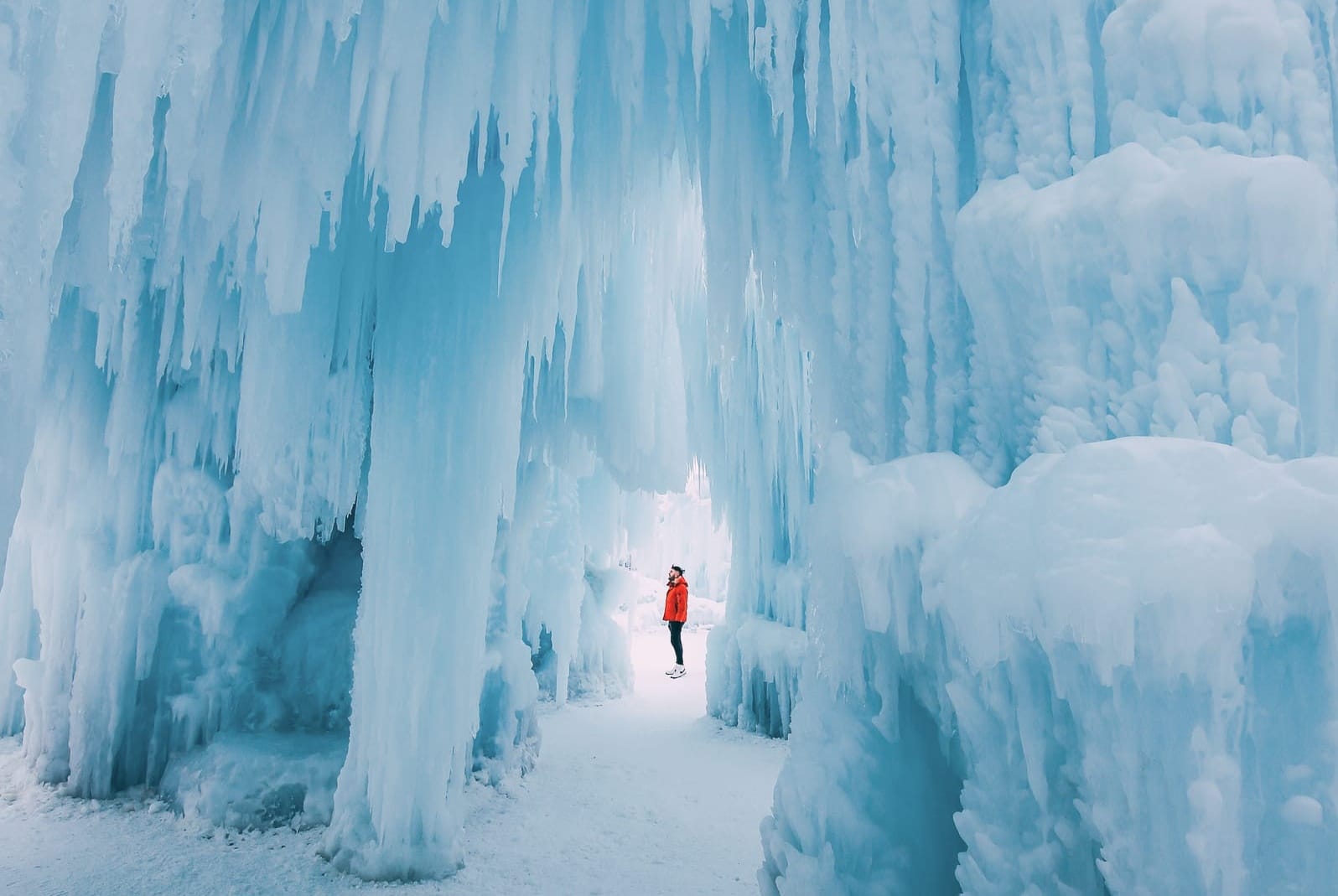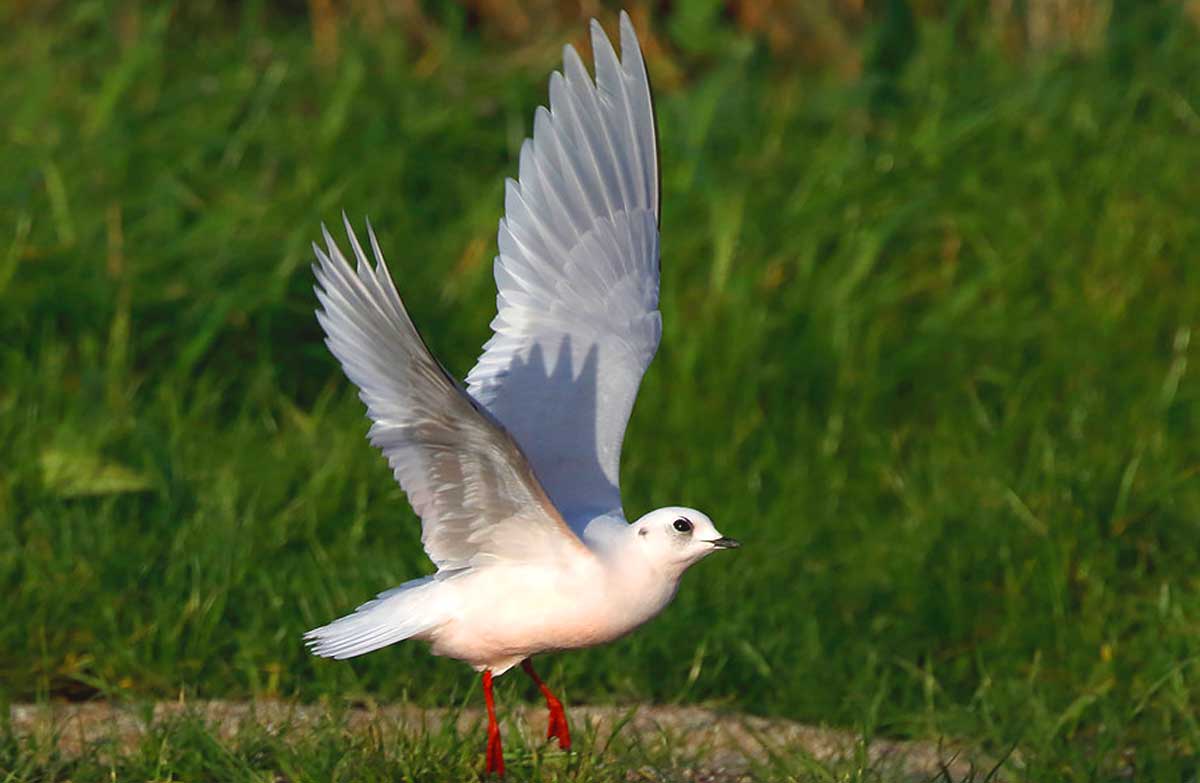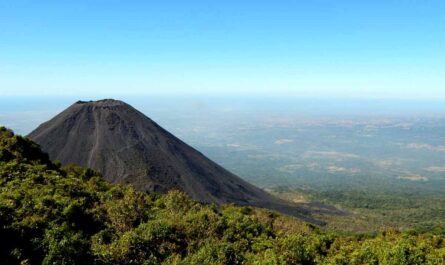What are some of the interesting facts about Canada, known for its vast landscapes and rich cultural tapestry, which stands as a beacon of diversity and natural beauty in North America? From the rugged shores of Newfoundland to the towering peaks of the Rocky Mountains, this expansive country boasts a geography that is as varied as it is stunning. Its cities, such as vibrant Toronto, historic Montreal, and picturesque Vancouver, pulse with multiculturalism and innovation, offering a blend of modern urban living and preserved heritage sites. Canada’s cultural mosaic is shaped by a tapestry of Indigenous peoples, French and British colonial histories, and waves of immigration from around the globe. This diversity is celebrated through festivals, cuisine, and arts that reflect both its indigenous roots and its status as a global melting pot. In this article, I will talk about some interesting facts about Canada. Keep reading.
Economically robust, Canada thrives on natural resources including oil, minerals, and timber, while also excelling in sectors like technology, finance, and manufacturing. Its stable political environment and commitment to social welfare make it a desirable destination for immigrants and visitors alike.
Interesting Facts About Canada: History, Culture, Travel
With its commitment to environmental stewardship and vast protected areas, Canada remains a haven for outdoor enthusiasts and nature lovers. Whether exploring the Northern Lights in Yukon or paddling through the pristine waters of Banff National Park, Canada offers an unparalleled blend of natural splendor and cultural richness. Here are some interesting facts about Canada:
1. Vast and Diverse: Canada’s Natural Beauty
Canada, the second-largest country in the world by total area, encompasses a diverse landscape that showcases majestic mountains, expansive forests, vast prairies, and extensive coastlines along the Atlantic, Pacific, and Arctic Oceans. The Canadian Rockies, stretching from British Columbia to Alberta, offer stunning peaks, glaciers, and turquoise lakes like Moraine Lake and Lake Louise. The boreal forests, covering a significant portion of Canada’s landmass, are home to diverse wildlife such as moose, bears, and wolves.
The Canadian Shield, a geological formation spanning Ontario, Quebec, and parts of other provinces, reveals ancient rock formations and pristine lakes. Along the coasts, Canada boasts rugged cliffs, picturesque fjords, and vibrant marine ecosystems teeming with whales, seals, and seabirds. This vast and varied landscape not only supports rich biodiversity but also provides Canadians and visitors alike with opportunities for outdoor adventure, nature exploration, and appreciation of Canada’s natural wonders.
2. Officially Bilingual: Canada’s Cultural Tapestry
Canada proudly embraces its multicultural heritage with English and French as its official languages. Rooted in its history as a bilingual nation since the Confederation in 1867, Canada’s linguistic duality reflects its commitment to inclusivity and cultural diversity. English is predominantly spoken in most provinces and territories, while French holds official status in Quebec and parts of Ontario, New Brunswick, and Manitoba.
Bilingualism is a cornerstone of Canadian identity, fostering linguistic tolerance, cultural exchange, and a deep appreciation for both Anglophone and Francophone traditions. The Canadian government promotes bilingualism through official language policies, education programs, and services available in both English and French across the country. This linguistic diversity enriches Canada’s cultural tapestry, shaping national discourse, literature, and arts, and fostering connections within and beyond its borders.
3. Maple Syrup: A Culinary Icon
Maple syrup, famously produced from tapping sugar maple trees during the spring thaw, holds a cherished place in Canadian culture as a symbol of national pride and culinary excellence. The process of collecting sap, boiling it down, and carefully monitoring the temperature yields the golden amber syrup enjoyed as a topping on pancakes, waffles, and desserts.
The maple syrup industry, concentrated primarily in Quebec and Ontario, celebrates its heritage through annual festivals like the Quebec City Maple Festival and the Elmira Maple Syrup Festival. Beyond its sweet flavor, maple syrup embodies Canada’s natural bounty, sustainable harvesting practices, and artisanal craftsmanship. Recognized as a quintessential Canadian delicacy, maple syrup contributes to Canada’s agricultural economy and cultural identity, symbolizing warmth, hospitality, and the sweetness of tradition.
4. The Great White North: Canada’s Arctic Charm
Canada’s northern regions, characterized by vast expanses of tundra and Arctic landscapes, endure long, cold winters that have earned the country the endearing nickname “The Great White North.” This remote and sparsely populated region encompasses the Canadian Arctic Archipelago, including Baffin Island and Ellesmere Island, as well as northern mainland territories such as Nunavut, Yukon, and the Northwest Territories.
The Arctic environment supports unique wildlife species such as polar bears, Arctic foxes, and caribou, adapted to survive in extreme cold and minimal daylight during the winter months. Indigenous peoples, including the Inuit and First Nations communities, have inhabited these regions for millennia, maintaining rich cultural traditions linked to Arctic survival, hunting, and storytelling. Canada’s Arctic region captivates with its pristine landscapes, stunning aurora borealis displays, and opportunities for adventurous travelers seeking to experience the beauty and resilience of the northern wilderness.
5. Niagara Falls: Nature’s Grandeur
Niagara Falls, situated on the border between Ontario, Canada, and New York, United States, stands as a majestic natural wonder renowned for its breathtaking beauty and sheer power. Comprising three distinct waterfalls — Horseshoe Falls, American Falls, and Bridal Veil Falls — Niagara Falls cascades millions of gallons of water from the Niagara River into the Niagara Gorge below. The iconic Horseshoe Falls, the largest of the three, measures approximately 57 meters in height and spans over 670 meters in width, creating a mesmerizing spectacle of rushing water, mist, and rainbows visible from viewpoints like Table Rock and the Niagara Parkway.
Niagara Falls attracts millions of visitors annually, drawn to its natural splendor, boat tours such as Maid of the Mist, and panoramic views from observation points on both the Canadian and American sides. Beyond its scenic allure, Niagara Falls serves as a symbol of Canada’s natural heritage and a testament to the power and beauty of the Earth’s geological forces.
6. Parliament Hill: The Heart of Canadian Governance
Parliament Hill, located in Ottawa, the capital city of Canada, stands as the symbolic and functional center of the country’s democratic governance. Perched majestically overlooking the Ottawa River, Parliament Hill is home to the iconic Parliament Buildings, including the Centre Block with its prominent Peace Tower, the East and West Blocks housing government offices, and the historic Library of Parliament.
These architectural treasures serve as the backdrop for Canada’s legislative proceedings, where Members of Parliament and Senators convene to debate, legislate, and uphold the nation’s democratic principles. Visitors to Parliament Hill can explore its historic architecture, attend guided tours, witness the Changing of the Guard ceremony, and celebrate national events such as Canada Day on July 1st. As a symbol of Canadian unity and democratic values, Parliament Hill holds a special place in the hearts of Canadians and remains a vital institution in shaping the nation’s future.
7. The Canadian Rockies: Nature’s Grandeur
The Canadian Rockies, a vast and awe-inspiring mountain range stretching across Alberta and British Columbia, epitomize Canada’s natural beauty and outdoor adventure. This UNESCO World Heritage site captivates with towering peaks, pristine glacial lakes like Moraine Lake and Lake Louise with their turquoise hues, and dense coniferous forests teeming with wildlife such as grizzly bears, elk, and mountain goats.
The Rockies offer unparalleled opportunities for outdoor activities year-round, including hiking through rugged trails, skiing in world-renowned resorts like Banff and Jasper, and exploring ancient icefields and dramatic canyons. Banff National Park, established in 1885 as Canada’s first national park, protects a significant portion of the Canadian Rockies and showcases iconic landmarks such as the Columbia Icefield and Athabasca Glacier. Whether seeking solitude in nature or thrilling adventures amidst mountainous terrain, the Canadian Rockies enchant visitors with their majestic landscapes and timeless allure.
8. Banff National Park: Natural Splendor
Banff National Park, nestled in the heart of the Canadian Rockies, stands as a pristine wilderness sanctuary renowned for its breathtaking natural beauty and ecological diversity. Established in 1885, Banff National Park is Canada’s oldest national park and a UNESCO World Heritage site, encompassing over 6,600 square kilometers of alpine meadows, towering mountain peaks, turquoise lakes, and ancient glaciers. Visitors to Banff can marvel at iconic landmarks such as Lake Louise, known for its vivid turquoise waters framed by Victoria Glacier, and Moraine Lake, set against the backdrop of the Valley of the Ten Peaks.
The park offers a wealth of outdoor activities, including hiking along scenic trails like the Plain of Six Glaciers, skiing in world-class resorts such as Sunshine Village and Lake Louise Ski Resort, and wildlife viewing opportunities to spot grizzly bears, elk, and bighorn sheep. Banff National Park’s commitment to conservation ensures the preservation of its natural splendor for future generations to enjoy, making it a cherished destination for nature lovers and outdoor enthusiasts alike.
9. French Canada: A Cultural Tapestry
Quebec, Canada’s largest French-speaking province, offers a vibrant cultural mosaic steeped in French-Canadian heritage, traditions, and distinct joie de vivre. From the cobblestone streets of Old Quebec City, a UNESCO World Heritage site renowned for its historic architecture and fortifications, to the cosmopolitan charm of Montreal, Quebec embraces its rich Francophone culture through language, cuisine, arts, and festivals. Visitors to Quebec can savor traditional French-Canadian delicacies such as poutine, tour renowned museums and art galleries like the Montreal Museum of Fine Arts, and experience cultural celebrations such as the Quebec Winter Carnival and Montreal International Jazz Festival.
Quebec’s cultural tapestry reflects a blend of European influences, Indigenous traditions, and contemporary innovations, fostering a unique identity that resonates across the province’s diverse landscapes, from the Laurentian Mountains to the picturesque Gaspé Peninsula. French Canada invites visitors to explore its captivating history, vibrant communities, and enduring cultural legacy that contribute to Canada’s multicultural fabric.
10. Toronto: Canada’s Urban Gateway
Toronto, Canada’s largest city and financial hub, pulsates with dynamic energy, cultural diversity, and a thriving arts scene that reflects its status as a global metropolis. Situated on the shores of Lake Ontario, Toronto boasts a striking skyline dominated by the iconic CN Tower, a symbol of Canadian engineering prowess and a panoramic vantage point for breathtaking city views. The city’s vibrant neighborhoods, from the eclectic shops and cafes of Kensington Market to the upscale boutiques of Yorkville, offer a tapestry of cultural experiences and culinary delights influenced by its multicultural population.
Toronto’s cultural institutions, including the Royal Ontario Museum and Art Gallery of Ontario, showcase world-class art collections spanning millennia and continents, while theaters and performance venues host acclaimed productions ranging from Broadway musicals to experimental theater. As a gateway to Canada’s West Coast, Toronto serves as a bustling hub for international business, technology innovation, and cultural exchange, embodying the spirit of Canadian hospitality and urban vitality.
11. First Nations People: Guardians of Indigenous Heritage
Canada proudly recognizes and celebrates its rich indigenous heritage, encompassing diverse First Nations, Inuit, and Métis cultures, traditions, and languages. These indigenous communities have inhabited Canada’s lands for millennia, maintaining profound connections to the natural world, ancestral knowledge, and spiritual traditions. First Nations peoples, representing over 600 distinct nations across the country, preserve unique cultural identities through art forms such as intricate beadwork, traditional drumming, and storytelling passed down through generations.
Inuit communities in Canada’s Arctic regions showcase resilience in harsh climates, crafting distinctive arts like soapstone carvings and intricate parkas adorned with vibrant patterns. Métis culture, originating from the fusion of Indigenous and European ancestry, flourishes with traditions like jigging dance and Métis sash weaving. Canada honors its indigenous heritage through land acknowledgments, cultural revitalization initiatives, and partnerships aimed at preserving languages and promoting indigenous rights and self-governance. The contributions of First Nations, Inuit, and Métis peoples enrich Canada’s national identity and underscore the importance of reconciliation, respect, and understanding within the fabric of Canadian society.
12. Wildlife Spectacle: Canada’s Natural Treasures
Canada’s vast and varied landscapes provide habitats for a diverse range of wildlife species, showcasing the country’s natural splendor and ecological richness. From the Arctic tundra to temperate rainforests and expansive prairies, Canada’s wildlife includes iconic species such as polar bears roaming icy shores, moose grazing in boreal forests, and black bears foraging in mountainous regions. Coastal waters teem with marine life, including majestic whales like humpbacks, orcas, and belugas, which migrate along Canada’s Atlantic and Pacific shores.
The Great Bear Rainforest in British Columbia shelters rare species like the Spirit Bear, a white variant of the black bear, and Pacific salmon crucial for both wildlife and indigenous cultures. Conservation efforts across Canada protect endangered species such as the woodland caribou and Canada lynx, ensuring sustainable ecosystems and preserving natural habitats for future generations. Wildlife viewing opportunities, from whale-watching tours to bear safaris, offer immersive experiences that highlight Canada’s commitment to environmental stewardship and biodiversity conservation.
13. Canadian Inventions: Pioneering Innovations
Canada’s legacy of innovation has left an indelible mark on the world stage with groundbreaking inventions that revolutionized industries and improved lives globally. Alexander Graham Bell’s invention of the telephone in 1876 at his laboratory in Nova Scotia sparked a communications revolution, connecting people across continents and laying the foundation for modern telecommunications. Canadian aerospace advancements include the Canadarm, a robotic arm integral to NASA’s space shuttle program, demonstrating Canada’s expertise in space robotics and international collaboration in space exploration.
The discovery of insulin by Canadian scientists Frederick Banting and Charles Best in 1921 revolutionized diabetes treatment, saving countless lives and earning a Nobel Prize in Physiology or Medicine. Canadian innovations continue to drive progress in diverse fields such as medical technology, renewable energy, and environmental sustainability, reflecting a culture of ingenuity, research excellence, and entrepreneurial spirit that defines Canada’s global reputation as a hub of innovation.
14. Timbits: Canada’s Sweet Delight
Timbits, bite-sized donut holes sold at Tim Hortons coffee shops across Canada, have become a beloved sweet treat synonymous with Canadian culture and comfort. Introduced in 1976 by the iconic Canadian restaurant chain Tim Hortons, Timbits offers a variety of flavors from classic glazed and chocolate to seasonal specialties like birthday cake and pumpkin spice. These delectable pastries are enjoyed by Canadians of all ages as a convenient snack, pairing perfectly with a cup of Tim Hortons’ signature coffee or hot chocolate.
Timbits not only satisfy sweet cravings but also evoke nostalgic memories of community gatherings, road trips, and moments of shared joy among friends and family. Embodying the warmth and hospitality that define Canadian hospitality, Timbits has become a cultural phenomenon, uniting Canadians from coast to coast in their love for these delightful miniature donuts.

15. Peacekeeping Missions: Canada’s Global Commitment
Canada has a proud history of contributing to international peacekeeping missions under the United Nations, demonstrating a steadfast commitment to promoting global peace, stability, and humanitarian assistance. Since the inception of UN peacekeeping in 1956, Canadian Armed Forces personnel have participated in over 50 missions worldwide, providing vital support in conflict zones, post-conflict reconstruction efforts, and humanitarian crises. Canadian peacekeepers are renowned for their professionalism, leadership, and dedication to upholding human rights and fostering dialogue among conflicting parties.
Canada’s peacekeeping contributions extend beyond military operations to include civilian experts in fields such as governance, rule of law, and gender equality, advancing sustainable peacebuilding initiatives and fostering inclusive societies. The Canadian government remains committed to supporting multilateral efforts aimed at resolving conflicts peacefully, protecting vulnerable populations, and promoting international cooperation to address global security challenges. Canada’s role in peacekeeping reflects its values of compassion, diplomacy, and respect for international law, reinforcing its role as a trusted partner in global peace and security initiatives.
16. The Canadian Flag: Symbol of Unity and Identity
The Canadian flag, proudly featuring a single red maple leaf against a white and red background, serves as an enduring symbol of national pride, unity, and identity. Adopted on February 15, 1965, the distinctive red and white colors of the Canadian flag symbolize peace, diversity, and the shared values that define the Canadian nation. The stylized maple leaf, an iconic emblem of Canada’s natural beauty and resilience, represents unity among its diverse population and reflects Canada’s commitment to inclusivity and equality.
The Canadian flag is prominently displayed during national celebrations such as Canada Day on July 1st, commemorating the country’s confederation in 1867, as well as on international diplomatic missions, military operations, and sporting events. The maple leaf motif is embraced as a cultural symbol across Canada, adorning official government insignia, currency, and uniforms of Canadian athletes competing on the world stage. The Canadian flag stands as a powerful symbol of unity, democracy, and Canadian values both at home and abroad, embodying the spirit of a nation defined by its rich heritage, multiculturalism, and shared aspirations for a brighter future.
17. Vancouver: Gateway to the Pacific Northwest
Vancouver, nestled between the Coast Mountains and the Pacific Ocean, stands as a picturesque gateway to Canada’s stunning West Coast and a hub of cultural diversity, outdoor adventure, and sustainable living. Renowned for its breathtaking natural beauty, Vancouver captivates with lush urban parks like Stanley Park, where visitors can cycle along scenic seawalls and admire panoramic views of the city skyline and surrounding mountains. The city’s vibrant neighborhoods, including historic Gastown and multicultural Chinatown, offer a fusion of culinary experiences, artisanal markets, and artistic expressions showcased in galleries and public art installations.
Vancouver’s thriving film industry, dubbed “Hollywood North,” contributes to its creative energy, while annual events such as the Vancouver International Film Festival and Celebration of Light fireworks festival attract visitors from around the globe. Outdoor enthusiasts flock to Vancouver for world-class skiing and snowboarding at nearby Whistler Blackcomb, kayaking in False Creek, and exploring the temperate rainforests of Pacific Spirit Regional Park. Vancouver’s commitment to sustainability and green initiatives, exemplified by its bike-friendly infrastructure and LEED-certified buildings, underscores its reputation as a progressive city that harmonizes urban living with natural beauty. As a gateway to the Pacific Northwest, Vancouver invites visitors to discover its cosmopolitan charm, outdoor adventures, and laid-back West Coast vibe that define its allure as one of Canada’s most livable cities.
18. Hockey: Canada’s Passionate Pursuit
Ice hockey reigns supreme as Canada’s national winter sport, deeply ingrained in the country’s cultural fabric and celebrated as a source of national pride and community camaraderie. With origins dating back to the 19th century, hockey evolved from outdoor pond games played with wooden sticks and makeshift pucks to a professional sport renowned for its fast-paced action, physicality, and skillful gameplay. Canada boasts a storied hockey history, producing legendary players such as Wayne Gretzky, Bobby Orr, and Maurice “Rocket” Richard, who have left an indelible mark on the sport’s legacy.
The National Hockey League (NHL), founded in Montreal in 1917, features iconic Canadian teams like the Montreal Canadiens, Toronto Maple Leafs, and Edmonton Oilers, whose successes and rivalries captivate fans nationwide. Hockey arenas, from small-town rinks to NHL arenas, serve as community hubs where players of all ages and skill levels come together to share their passion for the game. Canada’s devotion to hockey transcends generations, uniting Canadians in their love for the sport and embodying the spirit of resilience, teamwork, and determination on and off the ice.
19. Victoria: Preserving British Colonial Charm
Victoria, the capital city of British Columbia, Canada, embodies a picturesque blend of British colonial heritage and natural beauty. Situated on the southern tip of Vancouver Island, Victoria is renowned for its well-preserved historical architecture, featuring elegant Victorian buildings, charming gardens, and iconic landmarks such as the stately British Columbia Legislature. The city’s Inner Harbour serves as a vibrant focal point with bustling marinas, waterfront cafes, and shops offering local crafts and seafood.
Victoria’s lush green spaces, including the world-famous Butchart Gardens and Beacon Hill Park, showcase colorful floral displays and tranquil lakes, inviting visitors to explore its serene natural landscapes. Cultural attractions like the Royal British Columbia Museum and Craigdarroch Castle provide insights into Victoria’s rich history, from its indigenous roots to the Victorian era and beyond. With a mild climate and year-round outdoor activities, Victoria captivates visitors with its old-world charm, scenic waterfront vistas, and a welcoming atmosphere that reflects its British colonial legacy.
20. The World’s Longest Coastline: Canada’s Maritime Majesty
Canada proudly boasts the world’s longest coastline, spanning over 243,000 kilometers (151,000 miles) along its Atlantic, Pacific, and Arctic shores. This extensive maritime border encompasses diverse ecosystems, from rugged cliffs and sandy beaches to pristine coastal rainforests and icy tundras. Canada’s coastline is a vital habitat for abundant marine life, including whales, seals, seabirds, and fish species crucial to coastal communities and indigenous cultures.
The Great Lakes-St. Lawrence Seaway system, linked to Canada’s coastline, facilitates international shipping, trade, and recreational boating, contributing significantly to the nation’s economy and global connectivity. Coastal communities across Canada celebrate maritime heritage through festivals, seafood festivals, and cultural events that highlight local traditions, maritime history, and conservation efforts to protect Canada’s coastal environments. Canada’s expansive coastline embodies the country’s natural beauty, maritime legacy, and commitment to sustainable stewardship of its marine resources.
21. The St. Lawrence River: Lifeline of Canadian History and Commerce
The St. Lawrence River, a majestic waterway flowing from the Great Lakes to the Atlantic Ocean, has played a pivotal role in shaping Canadian history, culture, and economic development. Spanning over 1,197 kilometers (744 miles), the St. Lawrence River serves as a vital transportation corridor, connecting inland ports like Montreal and Quebec City to international trade routes and the global marketplace. Historical settlements along the St. Lawrence, including Quebec City, Montreal, and Trois-Rivières, reflect centuries of French, British, and indigenous influence, with architectural landmarks, fortifications, and cultural institutions preserving their rich heritage.
The St. Lawrence Seaway, completed in 1959, transformed the river into a navigable channel for ocean-going vessels, enhancing Canada’s commercial competitiveness and facilitating the movement of goods, raw materials, and agricultural products to global markets. Today, the St. Lawrence River continues to support thriving industries, recreational boating, and ecological conservation efforts, embodying its enduring significance as a lifeline of Canadian commerce, culture, and natural heritage.
22. Winter Festivals: Embracing the Seasonal Splendor
Canadians embrace the beauty and charm of winter through vibrant festivals that celebrate the season’s splendor, cultural diversity, and outdoor activities. The Quebec Winter Carnival, held annually in Quebec City, stands as one of the world’s largest winter festivals, featuring elaborate ice sculptures, parades, and traditional Bonhomme Carnaval celebrations. Winnipeg’s Festival du Voyageur honors French-Canadian heritage with fur trading reenactments, lively music, and French cuisine amid snowy landscapes. Across Canada, winter festivals showcase indigenous traditions, artistic performances, and culinary delights like maple taffy and poutine, creating a festive atmosphere that embraces the joys of winter.
Activities such as ice skating, snowshoeing, and tobogganing unite communities in shared outdoor experiences, while indoor events highlight Canadian arts, music, and storytelling traditions. Winter festivals not only celebrate Canada’s seasonal landscapes but also foster community spirit, cultural pride, and resilience in the face of cold climates, making them cherished annual traditions that illuminate the nation’s diverse cultural tapestry.
23. Poutine: Quebec’s Iconic Comfort Food
Poutine, a quintessential Quebecois dish, has earned its place as a beloved comfort food across Canada and beyond. Originating in rural Quebec in the late 1950s, poutine features a hearty combination of crispy French fries topped with fresh cheese curds, typically made from cheddar, and generously smothered in savory gravy. This indulgent comfort food has evolved over the years, with variations that include toppings such as pulled pork, bacon, or mushrooms, catering to diverse tastes while retaining its fundamental appeal.
Poutine’s popularity transcends regional boundaries, making it a staple in diners, pubs, and even upscale restaurants across Canada. Its simple yet satisfying ingredients and rich flavors embody the spirit of Canadian culinary innovation and comfort, offering a warm embrace of indulgence that brings people together to savor a uniquely Canadian treat.
24. Universal Healthcare: Canada’s Commitment to Health
Canada is renowned for its universal healthcare system, which provides essential medical services to all Canadian citizens and permanent residents based on need rather than ability to pay. Established under the principles of the Canada Health Act in 1984, Canada’s healthcare system guarantees access to medically necessary hospital and physician services, ensuring that individuals receive timely care without financial barriers.
Managed at both federal and provincial levels, Canada’s healthcare system offers comprehensive coverage for essential medical treatments, diagnostic services, and preventative care, contributing to improved public health outcomes and longevity. Despite challenges such as wait times for elective procedures and healthcare funding pressures, Canada’s commitment to universal healthcare remains a cornerstone of its social safety net, reflecting values of equity, compassion, and solidarity in ensuring healthcare access as a fundamental human right.
25. Advanced Education: Nurturing Knowledge and Innovation
Canada’s education system is recognized globally for its high standards, diverse academic offerings, and commitment to innovation across all levels of learning. From elementary and secondary education to post-secondary institutions including universities, colleges, and technical schools, Canada prioritizes accessible and inclusive education that fosters intellectual growth, critical thinking, and lifelong learning. Canadian universities consistently rank among the world’s best for academic excellence, research output, and student satisfaction, attracting international students seeking quality education in diverse fields such as engineering, medicine, humanities, and sciences.
The Canadian government invests significantly in research and development, supporting groundbreaking discoveries and technological advancements that contribute to global innovation and economic competitiveness. With a multicultural student body and vibrant campus communities, Canadian educational institutions promote cultural diversity, academic collaboration, and cross-cultural understanding, preparing graduates to thrive in a rapidly evolving global landscape.
26. The Stratford Festival: Celebrating Shakespearean Excellence
The Stratford Festival, located in Stratford, Ontario, stands as a prestigious cultural event celebrated globally for its dedication to Shakespearean theatre and the performing arts. Founded in 1953 by Tom Patterson, the festival transformed a small Canadian town into a renowned destination for theatre enthusiasts, showcasing world-class productions of Shakespeare’s plays alongside contemporary works and musicals. Each season, the festival attracts thousands of visitors to its iconic theaters, including the Festival Theatre and the Avon Theatre, where talented actors, directors, and designers collaborate to bring classic and innovative performances to life.
Beyond its theatrical significance, the Stratford Festival fosters educational initiatives, workshops, and community engagement programs that enrich cultural literacy and promote a deeper appreciation for the arts. As a cornerstone of Canada’s theatrical heritage, the Stratford Festival continues to inspire creativity, dialogue, and artistic excellence, reflecting Shakespeare’s enduring legacy and Canada’s commitment to nurturing the performing arts.
27. The Canadian Shield: Ancient Geological Wonder
The Canadian Shield encompasses a vast expanse of rugged terrain, stretching across much of eastern, central, and northern Canada, and represents one of the Earth’s oldest geological formations. Composed of ancient bedrock dating back over 3 billion years, the Shield’s distinctive landscape features towering granite cliffs, expansive boreal forests, and thousands of pristine lakes carved by retreating glaciers during the last Ice Age.
This geological wonderland serves as a natural habitat for diverse wildlife, including moose, black bears, and migratory birds, while also supporting traditional indigenous cultures that have thrived on its resources for millennia. The Canadian Shield’s mineral-rich soils have historically fueled Canada’s mining industry, yielding valuable resources such as gold, nickel, and uranium, contributing to the nation’s economic prosperity. Today, the Shield’s rugged beauty and ecological significance attract outdoor enthusiasts, scientists, and adventurers seeking to explore its pristine wilderness and unravel its ancient geological mysteries.
28. Canadian Literature: A Tapestry of Literary Excellence
Canada boasts a rich literary tradition shaped by a diverse array of voices and perspectives, with acclaimed authors such as Margaret Atwood, Alice Munro, and Michael Ondaatje making profound contributions to world literature. Known for its multicultural mosaic and bilingual heritage, Canadian literature reflects the nation’s complex cultural identity and historical narratives through a diverse range of genres, themes, and narrative styles.
From Atwood’s dystopian masterpieces to Munro’s intimate portrayals of rural Ontario life and Ondaatje’s poetic explorations of identity and memory, Canadian writers have garnered international acclaim for their literary craftsmanship and insightful reflections on Canadian society, history, and human experience. Canadian literature continues to evolve and expand, embracing new voices from diverse backgrounds and offering readers a deeper understanding of Canada’s cultural landscape and global significance in the realm of letters.
29. Multicultural Mosaic: Embracing Diversity in Canada
Canada proudly embraces its identity as a multicultural nation, characterized by a vibrant tapestry of cultures, traditions, and languages brought together by generations of immigrants from around the world. From bustling urban centers to remote rural communities, Canadians celebrate cultural diversity through festivals, cuisine, arts, and community events that reflect a rich blend of indigenous heritage, European influences, and global diasporas. How AI, ChatGPT maximizes earnings of many people in minutes
Immigration policies that prioritize inclusivity and social integration have fostered thriving ethnic neighborhoods, where diverse communities preserve and share their cultural practices while contributing to Canada’s economic growth and social cohesion. The multicultural mosaic of Canada not only enriches national identity but also promotes mutual respect, understanding, and unity among people of different backgrounds, reinforcing Canada’s commitment to multiculturalism as a cornerstone of its social fabric and collective strength.



